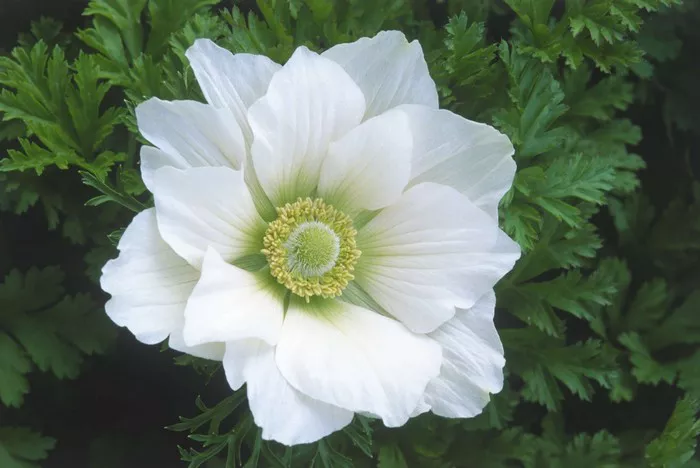Anemone flowers, with their delicate petals and vibrant colors, have long captivated humanity with their profound symbolism. From ancient mythology to modern culture, these flowers carry a rich tapestry of meanings that evoke emotions ranging from anticipation to protection, and from fragility to fading hope. In this comprehensive exploration, we delve into the multifaceted symbolism of anemones, examining their cultural significance, the origin of their name, and the nuanced meanings associated with their varied colors.
General Symbolism of Anemones
Anemones encompass a spectrum of symbolism that resonates deeply with human experiences and emotions. One of the most common interpretations of anemones is their association with anticipation. Like the flower’s characteristic behavior of opening and closing in response to wind or touch, anticipation suggests a sense of readiness and expectation, hinting at the potential for new beginnings or discoveries.
Moreover, anemones symbolize protection, serving as a reminder of the fragility of life and the need for shelter and security. Their delicate appearance belies their resilience, akin to how individuals may exhibit strength and resilience in the face of adversity. Additionally, anemones are often associated with fading hope, representing the ephemeral nature of beauty and the transient quality of dreams.
The name “anemone” itself carries historical significance, deriving from the Greek word for wind, “anemos.” In Greek mythology, Anemos was the god of the wind, and the association between anemones and the wind underscores their ephemeral nature and their tendency to sway and dance with the breeze.
Cultural Significance
The symbolism of anemones extends beyond Greek mythology, permeating various cultures around the world. In Greek mythology, anemones are linked to the story of Aphrodite and Adonis. According to legend, Adonis was mortally wounded while hunting, and from his blood sprang forth the crimson anemone flower. Thus, anemones became symbols of love and sacrifice, embodying the fleeting beauty of life and the inevitability of death.
In other cultures, such as China and Japan, anemones hold distinct meanings. In China, anemones symbolize luck and protection against evil spirits, while in Japan, they are associated with death and mourning. This divergence in symbolism highlights the cultural nuances and the varied interpretations of anemones across different societies.
Anemone Colors and Their Meanings
The symbolism of anemones is further nuanced by the colors of the flowers, each hue imbuing the blossoms with unique significance. White anemones, for instance, symbolize purity, innocence, and sincerity. Their pristine petals evoke a sense of serenity and tranquility, making them popular choices for weddings and other celebrations of new beginnings.
On the other hand, pink anemones are often associated with abandonment and a feeling of being forsaken. The delicate blush of pink petals conveys a sense of vulnerability and longing, resonating with themes of unrequited love or loss.
Red anemones exude passion, love, and the inevitability of death. The deep crimson hue of these flowers evokes the intensity of emotions, from fiery desire to profound grief, encapsulating the complexities of human relationships and the transient nature of existence.
Purple anemones offer protection against evil and bad luck, serving as talismans of spiritual guardianship. The regal hue of purple symbolizes strength and resilience, warding off malevolent forces and ushering in blessings of fortune and prosperity.
Anemones as Gifts
The appropriateness of gifting anemones varies depending on the occasion and the message one wishes to convey. White anemones, with their associations with purity and innocence, make exquisite gifts for weddings, christenings, and other joyous celebrations of new beginnings.
Pink anemones, while beautiful, may carry connotations of sadness or longing, making them suitable for occasions of sympathy or support. Their gentle hues offer solace and comfort, serving as tokens of compassion and understanding.
Red anemones, with their passionate symbolism, are ideal gifts for romantic gestures or declarations of love. Whether presented as a bouquet or a single stem, red anemones convey ardor and devotion, igniting the flames of passion in the hearts of recipients.
Purple anemones, with their protective qualities, make thoughtful gifts for occasions where blessings of good fortune and safeguarding are desired. Whether given as tokens of friendship or as symbols of gratitude, purple anemones bestow blessings of prosperity and well-being upon the recipient.
Conclusion
In conclusion, anemone flowers encapsulate a wealth of symbolism that transcends time and culture. From their associations with anticipation and protection to their diverse meanings across different hues, anemones continue to intrigue and inspire with their timeless beauty and profound significance. Whether gifted as tokens of love, sympathy, or celebration, anemones serve as poignant reminders of life’s transient nature and the enduring power of human emotions.


